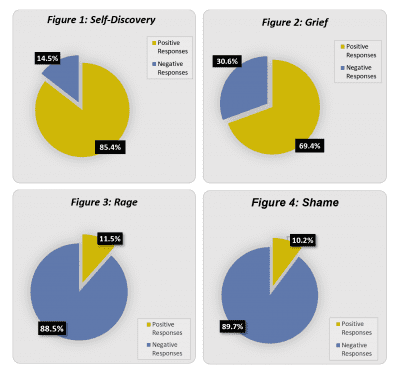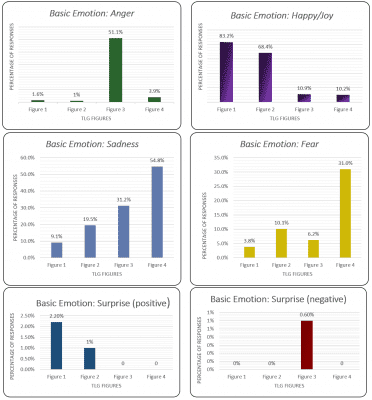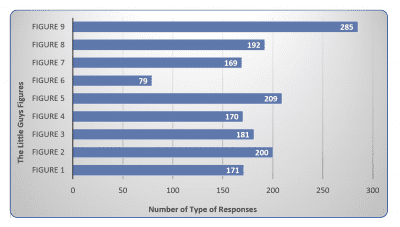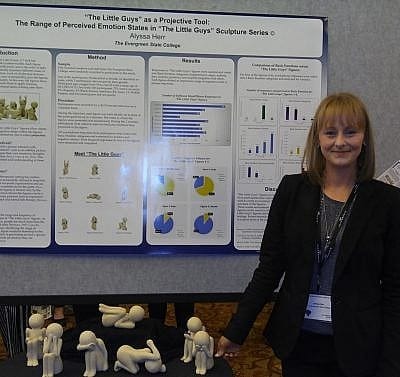 Back
Back
Clinical Research Studies
“The Little Guys” as a Projective Tool:
The Range of Perceived Emotion States in “The Little Guys” Figures
Alyssa Herr
The Evergreen State College
This Study is an Undergraduate Research Project completed by Alyssa Herr and presented at the 2017 California Psychological Association Convention (a division of the APA) in Long Beach, CA. Read Alyssa’s research paper: “The Little Guys” as a Projective Tool: The Range of Perceived Emotion States in “The Little Guys” Figures.
STUDY OVERVIEW
Introduction:
“The Little Guys” figures are a set of nine, 5-7 inch tall humanoid figures, made from crushed marble dust. Each figure weighs 1.5 pounds, warms with touch, and is the color of light grey stone. The figures physically represent different states of emotions through body posture. Lack of all physical features associated with gender, age, race or personality, give the figures a body form void of individuality. In this way, the figures leave room for a person working with them to apply features, personality, gender and emotional states of being onto them.
The universal quality of The Little Guys figures allow clients to perceive emotions and cognitive states within the figures they may be experiencing themselves, this is called projection.
What is projection?
Projection is a process in which a client interacts with “ambiguous, unstructured stimuli” such as inkblots, pictures, objects, or visual art to project their own emotions, thoughts and state of being onto the item (Reevy, Ozer, & Ito, 2010). This assists with recognition of unconscious emotions as well as aids in the clinician’s understanding of those emotions.
Uses for “The Little Guys”
Use of the figures within a therapeutic setting has endless possibilities. They have been successfully utilized in hospitals, clinics, private practices, not-for-profit organizations and are currently in over 7 different countries across the globe (Herr, 1994). Although the use of the figures is limited only by the clinician’s creativity, studies have shown The Little Guys can be a beneficial tool in psychotherapy practices such as expressive arts therapy, sand tray therapy and formal talk therapy (Berman, 1997; Carwile, Swenny, 1999).
This Study:
This study aimed to identify the range and frequency of perceived emotions in all nine of The Little Guys figures. As previous studies have shown, people see much more than the emotion the figure is named after (Berman, 1997; Carwile, Swenny, 1999). For this reason, identifying the emotions perceived in each figure would be beneficial to the clinician in cases where a client is gravitating toward a specific figure but is unable to articulate an emotion they are experiencing or perceiving in it.
Method:
Sample
One hundred students and staff from The Evergreen State College were randomly recruited to participate in this study.
Out of the participants, 54 identified as female, 41 identified as male, while 5 participants did not specify their gender. Participant ages ranged from 18 to over 65 with a mean age of 28.3 (SD=10.7). Out of the 100 participants 75% were Caucasian, 8% Hispanic, 6% Black/African American, 8% Asian, 1% Middle Eastern, and two participants did not specify.
Procedure
Participants were recruited by asking if they wanted to participate in a 20-25-minute interview.
During the interview, each figure was individually set in front of the participant for up to 2 minutes. The order in which the figures were presented was randomized. During the 2 minutes, participants were asked to state out loud any emotions they perceived in the figure.
All word/phrase responses from participants were coded into Basic Emotion categories and examined for positive and negative valance. Most frequent responses for four of the figures were measured and compared.
Results:
Responses to The Little Guys figures were counted and coded into Basic Emotion categories (happiness/joy, anger, sadness, fear, surprise (positive), and surprise (negative) and other).
Each figure elicited an impressive range of separate words or phrase responses.
Number of Different Word/Phrase Responses to The Little Guys Figures
Positive / Negative Valance for The Little Guys Figures 1-4

Comparison of Basic Emotions across The Little Guys Figures
For four of the figures (1-4), word/phrase responses were coded into 6 Basic Emotion categories and analyzed for variance.
Number of responses categorized as Basic Emotion for The Little Guys figures: 1-4

Discussion:
“The Little Guys” figures elicited a wider range of responses from participants than expected. Results from this study will be used to create an inventory list of responses to be included with purchase of the figures.
These results demonstrate the exciting possibilities in which the figures can be used in a clinical setting and proves that the “The Little Guys” figures are an effective tool for projection with individuals. Future research on The Little Guys is recommended to explore more of the powerful effects of these dynamic and unique tools.
Read this 2017 Research Paper that revealed the vast range of perceptions of emotions with “The Little Guys” Sculpture Series.
“The Little Guys” as a Projective Tool: The Range of Perceived Emotion States in “The Little Guys” Figures
Additional Study Available:
Breaking Through The Emotional Walls with The Little Guys Sculptures, Karla K. Carwile and Mathew J. Sweeney, University of Illinois – Springfield, Graduate Masters Project.



